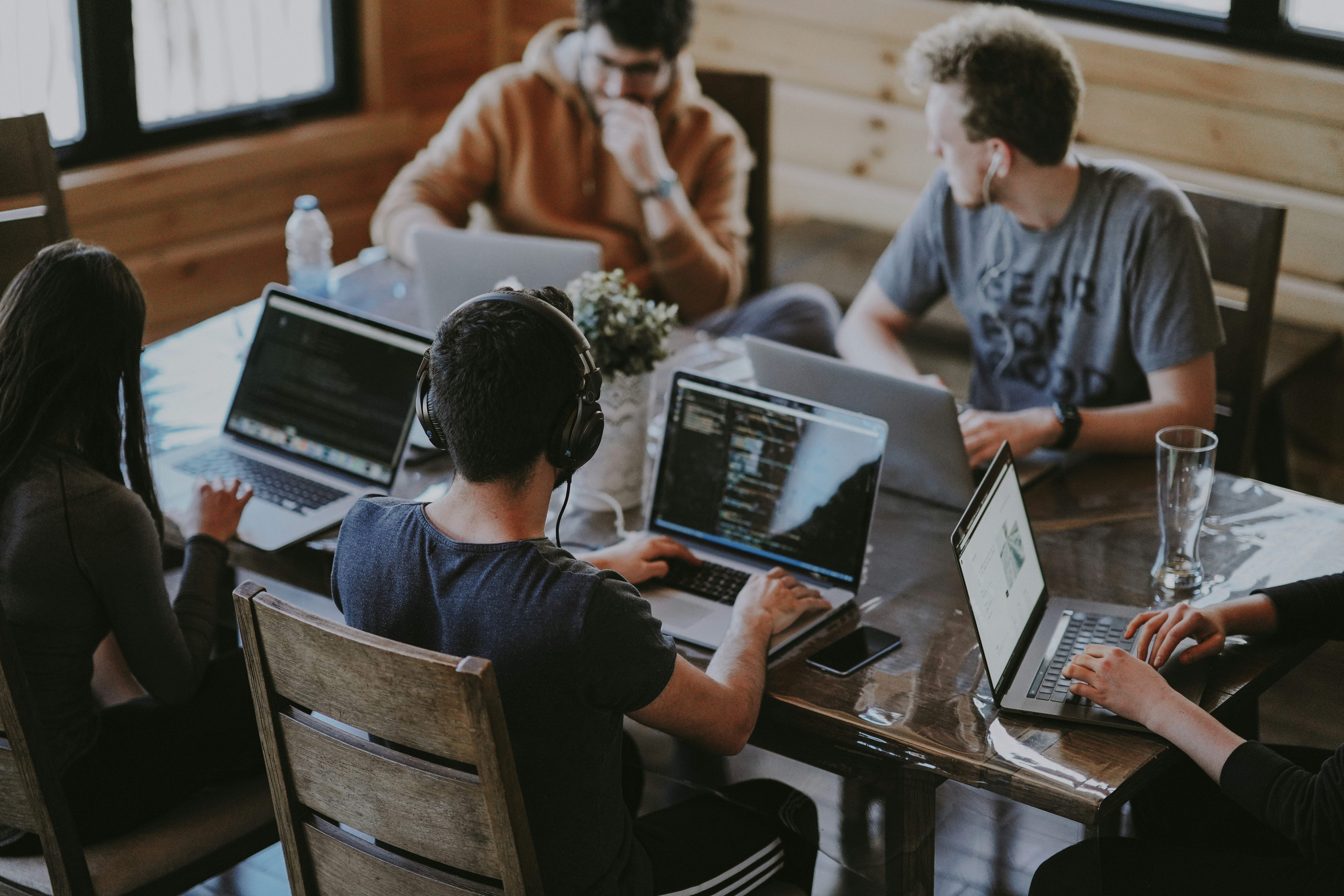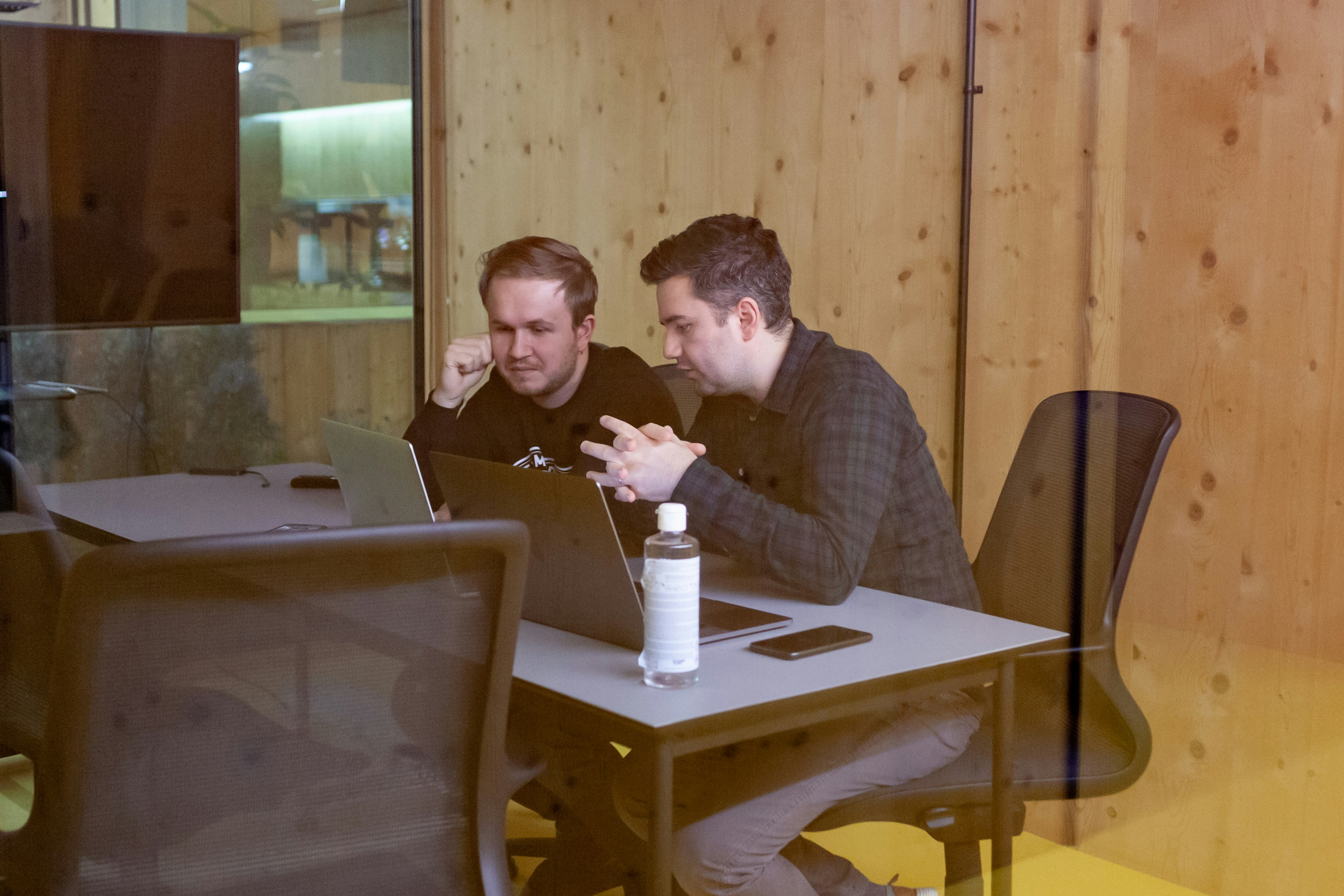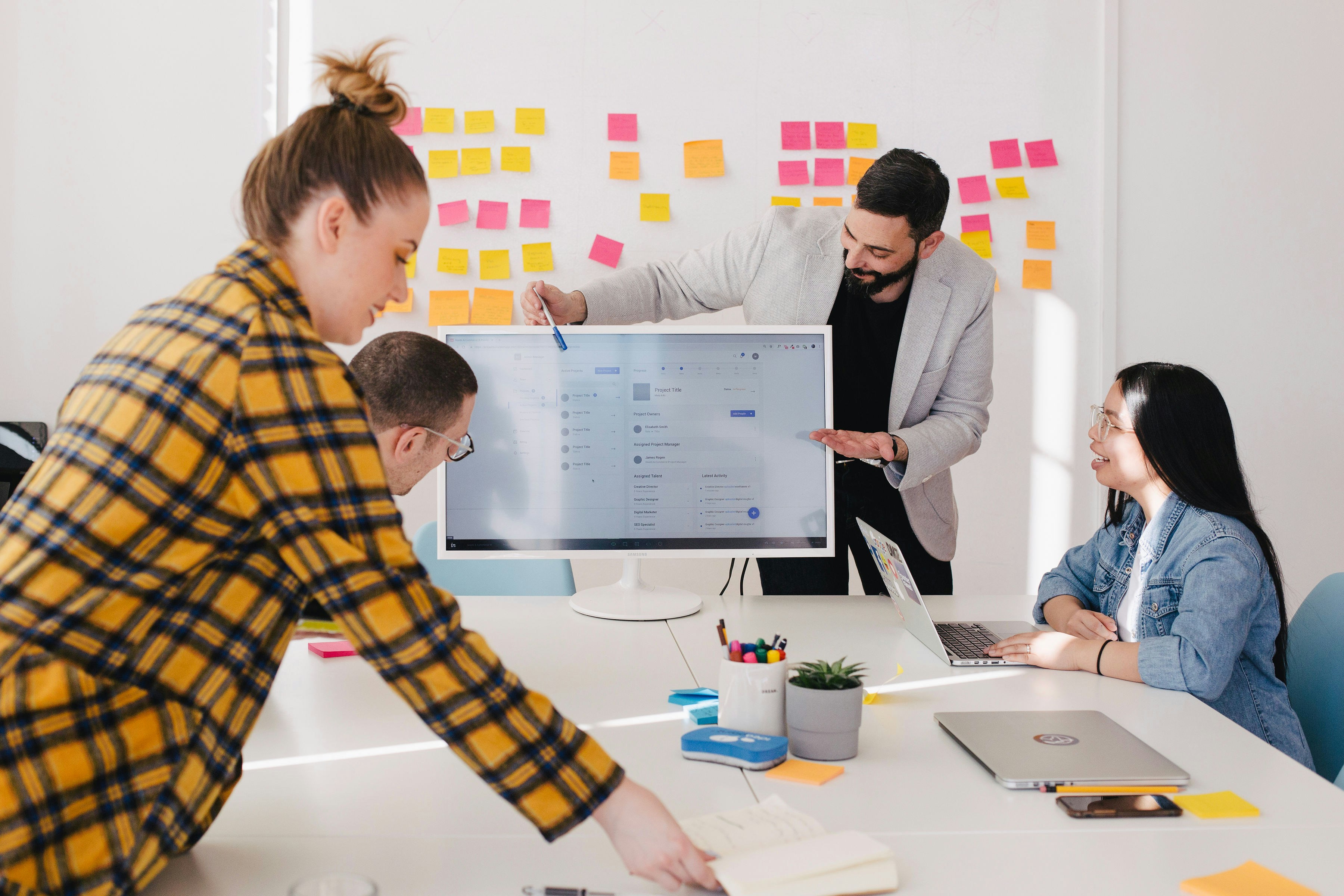Description
Brief: Design, make and implement a collaborative working tool
Group Members : 4
Time Frame: 7 Weeks

Project in Collaboration with DK-CM
DKCM is a practice of architects, researchers and strategists who work in public to create spatial, environmental and social change.


Interview Formulation




Interview Formulation Structuring


Formulating interview questions

First Interview
Second Interview
Third Interview



Love Letter Breakup Letter

Analysing Interviews


Problems identification from Research
Work not appreciated or celebrated enough
Importance of good Management
The system being incredibly complicated
Importance of personal relationships
Truly believe in the mission
Lack of free-flowing information/ Confidential information
Cultural and working differences in the teams.
Communication between teams
Balancing offline and online work dynamics.

We conducted different tests:
Metaphor exercise
We asked people to interact and explain their work using metaphors. This approach aimed to facilitate communication of complex ideas and make it easier for individuals outside their department to understand. This exercise received positive feedback and proved to be quite popular among participants.
Team-Tac-Toe exercise
In this activity, one team played a game with another team they didn't know. However, people seemed reluctant to engage with the large board we had set up, possibly feeling intimidated by it. Some participants also hesitated to participate, assuming it would consume too much of their time. Unfortunately, this exercise did not generate much engagement.
Answer one question and leave one
This exercise involved individuals writing down a question for the next person to answer, followed by leaving a question for the subsequent participant. People found this exercise highly engaging, and we received enthusiastic participation. It seemed that the exercise's appeal lay in its simplicity, fun nature, and the minimal time investment required
Conducting Workshops








Insights from Workshop
Anonymity and Indirect Interaction Preference
People feel more comfortable sharing personal information anonymously in public settings and tend to favour indirect interaction over face-to-face interaction with strangers.
Unequal Information Reception
Individuals are less inclined to engage in interaction when they perceive the reception of information to be unequal, impacting the willingness to communicate.
Uncertainty in Availability
Hesitancy in approaching others in public settings often stems from uncertainty about their availability for interaction, influencing social interactions.
Activity-Based Interaction Enhancement
Engaging in enjoyable activities can effectively facilitate interaction and nurture the development of collaborative relationships, particularly in the initial stages.

Generating Ideas
Crazy 8 Ideation




Linking Ideas Together


Some Ideas Generated
Focusing on fostering appreciation.
Incorporating an arcade machine-inspired display with rewards in the form of arcade tickets.
Introducing physical badges integrated with employee ID cards.
Implementing a Company Integration Mentorship Program.
Facilitating appreciation through physical letter posts.
Broadcasting daily company-wide appreciation posts via email.
Establishing a reward system based on the accumulation of appreciation.
Showcasing posts on a large screen in the lobby.
Encouraging inter-team appreciation.
Testing Ideations


Ideation 1
CrossConnect
Identifiable designated spaces which serve as catalysts for cross-level collaboration that include mentorship sessions, cross-functional project discussions and a venting room to break hierarchical barriers.
Literature and Case Studies

Concept of Spatial Design
Ideation 2
Venting Room
Add breakpoints to your blank page, then drop sections to have them responsive out of the box.

Venting Room Function
Anonymous Expression
Employees are encouraged to write down their frustrations, challenges, or suggestions on slips of paper.
These slips can then be placed through the window into a designated receptacle on the other side.
By maintaining anonymity, employees feel more comfortable expressing themselves openly and honestly
Conflict Resolution and Support
The feedback gathered from the room is used to identify areas of improvement within the organisation.
Issues requiring immediate attention, such as workplace conflicts or systemic problems, are addressed promptly and discreetly.
The room also serves as a platform for employees to seek support and guidance, with resources provided for counselling or conflict resolution if needed.
Promoting Transparency and Trust
The existence of the room demonstrates the organisation’s commitment to transparency and open communication.
Employees feel valued and heard, knowing that their concerns are taken seriously and addressed appropriately.
Trust and morale within the workplace are strengthened as a result of fostering a culture of openness and accountability.

Research In GLA (Greater London Authority)
Step 1: Contextual Understanding
Recognising the distinctive context of the GLA (Global Learning Academy) and acknowledging potential differences from a college setting.
Understand the need to explore interactions within this specific environment to tailor interventions effectively.
Step 4: Utilisation of Insights
Utilising the insights gained from the observations to guide the subsequent trajectory of the project.
Determining how the findings can inform the development of interventions aimed at enhancing interactions within the GLA
Step 3: Observation and Analysis
Conducting observations and gathering findings from the interactions facilitated by the introduced elements.
Analysing the observed interactions to gain valuable insights into the dynamics and patterns within the GLA environment.
Step 2: Introduction of Interactive Elements
Introducing a range of interactive elements on the cafeteria tables at the GLA to facilitate engagement and observation.
Implementing various elements designed to encourage interaction and participation among individuals in the GLA community.
Step 5: Analysis of Spaces
Conducting a thorough analysis of the various spaces within the GLA to identify potential areas for intervention implementation.
Identifying spaces where interventions could effectively facilitate interactions and foster a sense of community within the GLA environment.


Spatial Analysis


Concept of Connect Loop
Appreciation Platform: The concept of appreciation is chosen for its potential to merge various ideas, spread positivity, foster connections, and recognise individuals' contributions.
Bridging Gaps: It aims to bridge gaps between different departments or silos within the organisation.
Handwritten Notes: Employers will use handwritten notes to express appreciation, adding a personal touch to the gesture.
Facilitating Interactions: The approach facilitates interactions between teams and individuals who share mutual interests.
Promoting Recognition: It promotes a sense of recognition for individuals' efforts within the organisation.




User Journey

Insights from Prototype Testing
Anonymous Expression
Employees are encouraged to write down their frustrations, challenges, or suggestions on slips of paper.
These slips can then be placed through the window into a designated receptacle on the other side.
By maintaining anonymity, employees feel more comfortable expressing themselves openly and honestly
Conflict Resolution and Support
The feedback gathered from the room is used to identify areas of improvement within the organisation.
Issues requiring immediate attention, such as workplace conflicts or systemic problems, are addressed promptly and discreetly.
The room also serves as a platform for employees to seek support and guidance, with resources provided for counselling or conflict resolution if needed.
Promoting Transparency and Trust
The existence of the room demonstrates the organisation’s commitment to transparency and open communication.
Employees feel valued and heard, knowing that their concerns are taken seriously and addressed appropriately.
Trust and morale within the workplace are strengthened as a result of fostering a culture of openness and accountability.

Kiosk Design




The iPad application
The iPad app is where users tap their ID card and share their appreciation note.
You can choose from a list of tags or create your own. This is how all the notes will look when you publish them

Intro screen

Introductory Page

You can search for colleagues to appreciate

This is the screen where you can hand-write you praise note

You can choose from a list of tags or you can create your own

This is how all the notes will look when you publish them
App Design
Step 1: Recipients receive notifications within the app when they receive praise notes.
Step 4: Recipients can also share praise notes on their LinkedIn page if desired.
Step 7: The database generated through PraiseLab notes and badges facilitates this search functionality.
Step 2: Notifications provide details about the sender of the note, the content of the note, and the reason for appreciation.
Step 5: The app offers a comprehensive overview of all received notes, including associated tags or categories.
Step 8: Overall, the app enhances recognition and collaboration within the organization by fostering a culture of appreciation and making it easy to connect with colleagues based on skills and traits.
Step 3: Recipients can view praise notes within the app, where they have the option to save them.
Step 6: Users can search for individuals within the organization based on specific traits or skills using the collaborative space.
Working Prototype
Give your colleague a badge of appreciation:
Dedicated Contributor
Inspiring
Innovator
Supportive Mentor
Creative
Visionary
Strategic Thinker
Dynamic Force

User Testing Insights
It was observed that the initial pages lacked clickable buttons, making it less evident that interaction was required.
The participant initially assumed they could only select their immediate colleagues, overlooking the option to search for all colleagues within the organization.
The participant expressed a desire to include the ability to upload colleagues' work in the notes, facilitating visibility across the organization.
The participant found the option to share notes via email appealing, given the prevalent use of email in the organization.
The participant suggested the addition of a "go-getter" badge.
The participant highlighted the absence of a current system for appreciating individuals within the GLA.
Additionally, the participant mentioned the potential integration of this system into employee appraisals
The TV display
This is where all the published notes will be displayed for everyone to see. The lobby of the GLA has a large TV screen where we plan to display all the published notes. Our plan is to prominently feature the most recent note and gradually reduce its size over time until it eventually fades away.



Testimonials
"Connecting people together through this web of like endorsements."
Participant at Borough of Bexley
"An appreciation message and kind words at a time when someone is having a bad day go a long way in improving someone's mood and helping them get through the rough patch."
Employee from Afiniti Software Services Pakistan
"Really touched receiving appreciations from other
employees. This kind of activity should happen once a month to bond."
Employees at Silicon Rental Solutions India
"It helps with the alienation that one might feel within large corporate jungles, one such that I am a part of."
Employee from Toyota Motors Pakistan


































